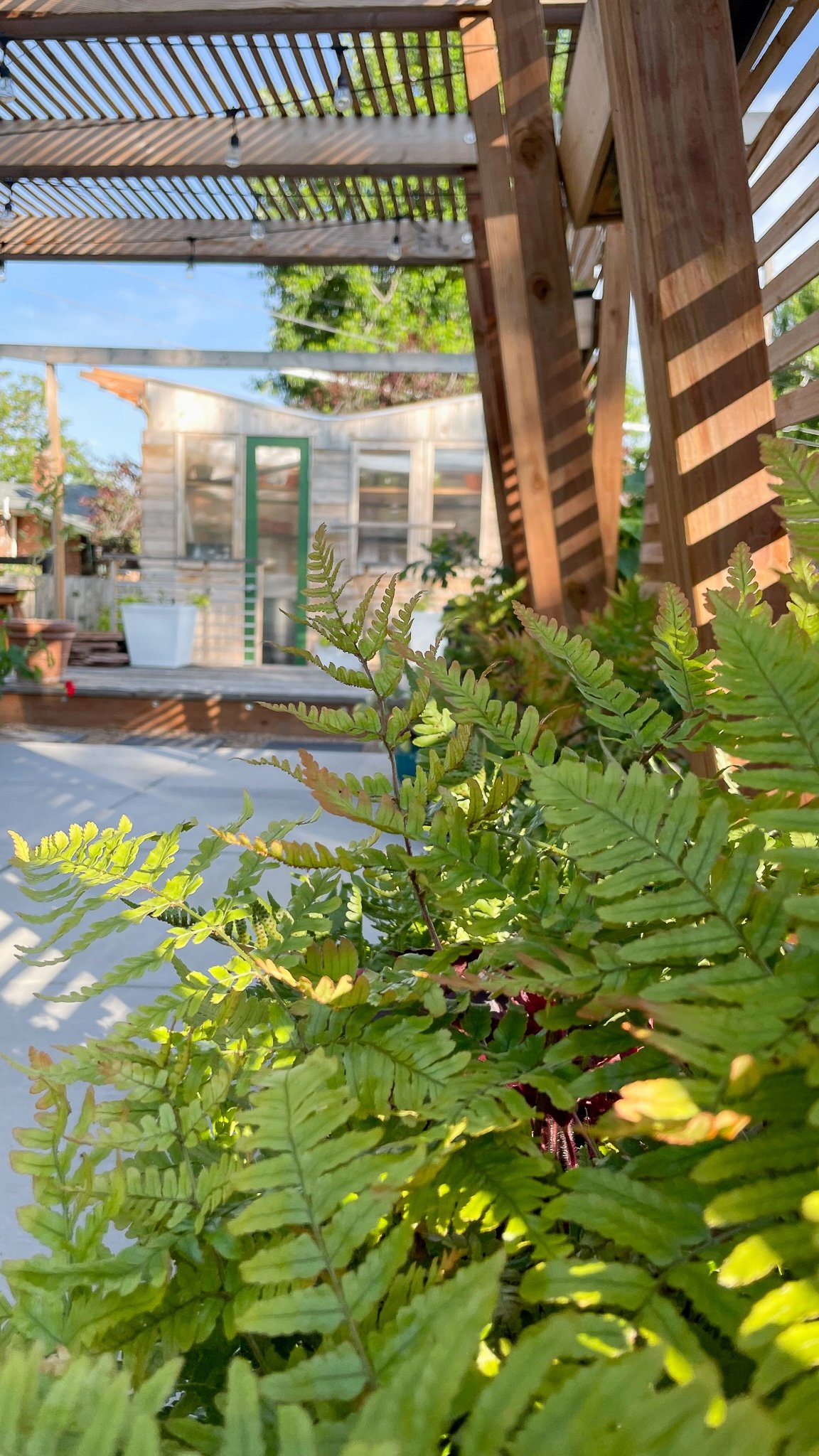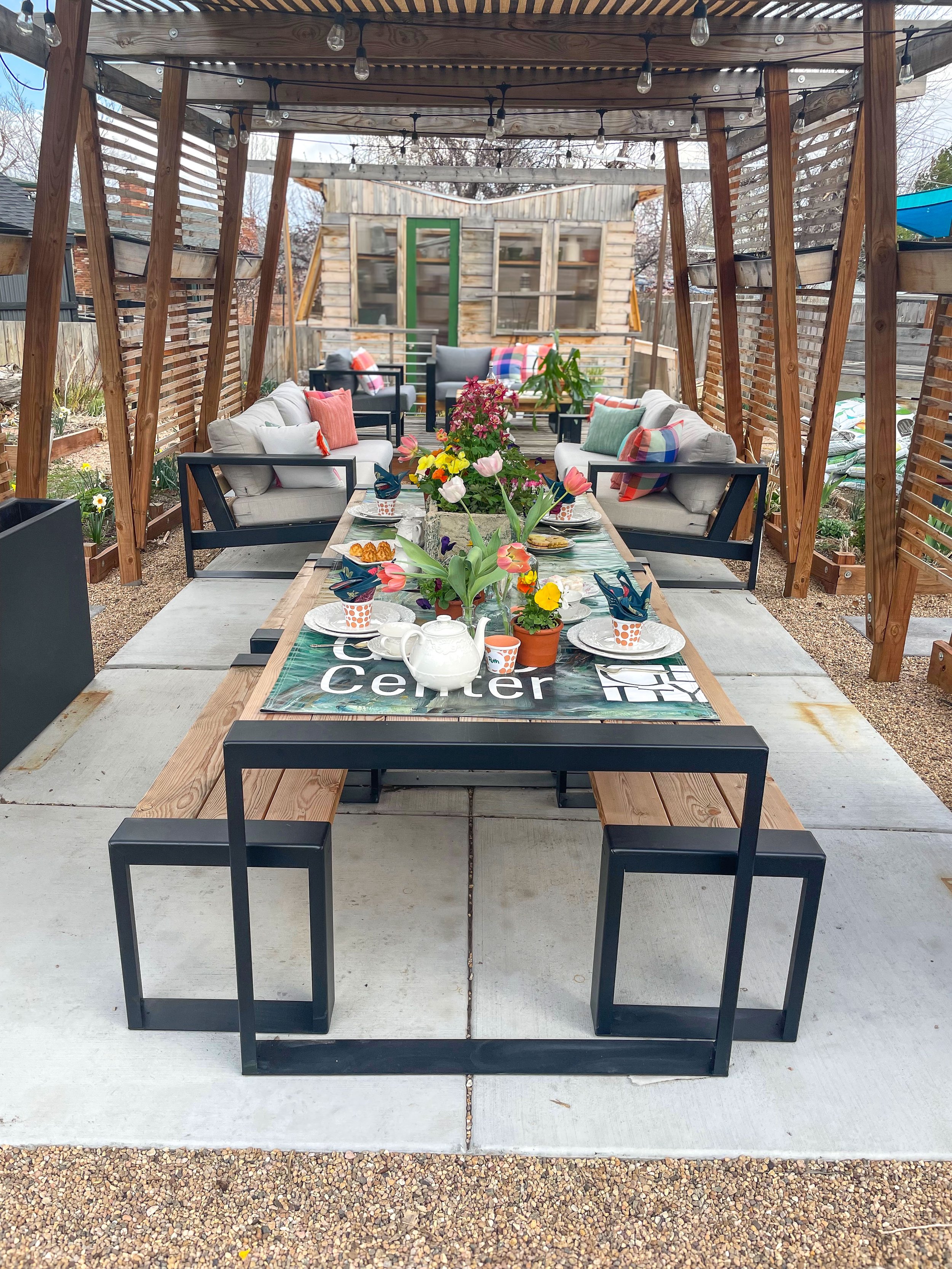The Shade House
Creating Shade in our Backyard
A few years ago, we had to take down a 70 year-old sugar maple tree in our backyard. To be honest: it was heartbreaking. Mable, as my son had named her, was a grand dame and provided all of the shade we got in the backyard. But Sugar Maples don’t belong in Colorado. We don’t have enough rain, and she was the first of eight sugar maples on our block to come down within a year. When they were planted in the 1950s the developers didn’t think about the suitability of trees in their environments long-term. And, frankly, we live on what use to be prairie. There shouldn’t be trees here at all. But I digress… the loss of Mable the Maple meant a loss of shade, something we desperately need in the heat of the summer and year-round. One day I was watching Gardener’s World and Advolly Richmond, a garden historian, did a segment about Victorian shade houses — sometimes known as orchid houses. I immediately knew what our yard needed. We needed to build a Shade House.
Tree surgeons begin taking Mable the Maple down.
We left Mable’s trunk and some branches to encourage biodiversity and provide nesting places for animal life.
Shade Houses on Pinterest
I have a great Pinterest board with historical examples of Shade Houses, Lath Houses, and Orchid Houses — the inspiration for our Shade House.
What is a Shade House?
A shade house is a purpose-built structure intended for the propagation and cultivation of shade-loving plants. The British in their colonizing Empire era collected plants from all over the world, and brought them back to the UK where many needed specialized places to thrive. This brought about the advent of the glasshouse or greenhouse as well as shade or orchid houses. But unlike a greenhouse, a shade house is not fully enclosed. It was often covered in thin strips of wood called lath, a common building material. The lath cut the amount of sunlight by half — or more depending on the spacing between the lath strips. But light and air, insects and birds could still move through the structure.
Some shade houses were designed for displaying plant collections — including prized orchids and ferns. Others included places to sit or to lounge — a cool respite surrounded by plants which can lower the temperature even further.
Shade houses are much rarer now, outside of botanical gardens. But I researched shade house designs, and my husband, an architect, designed a shade house for our backyard which would be both a place for plants and for people. With a significantly more severe climate in Colorado than that in the UK, I can’t grow orchids or rare plants in my shade house, but I certainly can fill it with plants all summer long, and it is now one of the most pleasurably comfortable places we have — truly a palace of outdoor living.
And now that we have our own Shade House, I can tell you: it’s time for a shade house renaissance! If you want to add shade to your space, rather than a pergola, consider taking it a step further. Adding lath provides deeper, longer-lasting shade depending on the orientation of your structure. And even in the heat of the summer, it reduces the temperature inside significantly. A blessed relief for plants and anyone else inside.
Building the Shade House
This was a DIY project, for the most part, and it took a long time. We worked on it when we had both time and money to do so. We did struggle with what to do for the floor. Initially, we started with the walls because we intended to put down a shade-tolerant grass or clover lawn inside. We also considered decomposed granite and gravel. But after considering the pros and cons, and thinking about how we wanted to use the space, we decided to put in a concrete slab instead. And I am glad we did! While the grass or clover would have been cooler, it also would have meant more maintenance, more mud, more muddy dogs, and less time spent on other gardening projects, so concrete was the right choice in the end.
The Shade House
Once the Shade House was finished, I set out to fill it with plants — the fun part, to be sure! This space will continue to evolve over time, but it is a central gathering point for our family, and will be our primary entertaining space for three seasons of the year, too.
More about the Shade House & Creating Shade
Outdoor Furniture
Check out the patio furniture we chose for the Shade House now that it has been furnished.
How to Create Shade
Nine ways to create shade in your yard including a few you may not have thought about!
How to Hang Shade Sails
Hanging shade sails is part art and part science. Learn our fool-proof way to hang them every time.




























